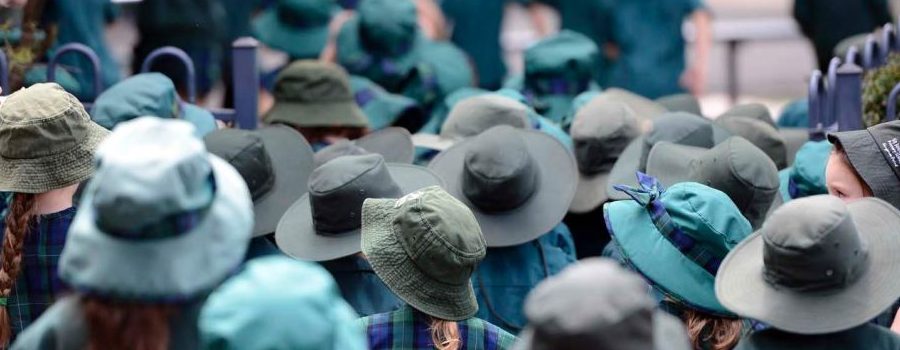Today is National Day of Action against Bullying and Violence. It’s a day of unity and strength as Australian schools stand together to say there will be no tolerance for bullying, and to imagine a place where bullying is no longer an issue.
This stance comes from even the highest point of our government. The Prime Minister said when announcing extra funding to schools in regards to bullying:
“Bullying and violence has no place in Australia.”
But what we fail to realise is bullying isn’t restricted to school spaces, but spaces beyond that of adolescence including: work environments, on the roads, at home, in places of authority, and every day life. The reality of bullying is ugly, and where it starts is with our children and what they are influenced by. Children are shaped by their experiences, and those come from the adults they are surrounded by whether they are parents, teachers, community leaders, etc. So before we go about scolding children for their actions, we need to take a step back and look at ourselves.
Speak, even if your voice shakes.
Written by Waleed Aly and Tom Whitty (@twhittyer) #TheProjectTV pic.twitter.com/tiCtFe6FNL
— The Project (@theprojecttv) March 15, 2018
The Project states one in four individuals aged 15 to 25 were bullied in the past year. According to Bullying No Way, it was found in 2009 that one in four Year 4 to Year 9 students are bullied every few weeks or more. 83% of students who bullied online also bullied in person, and 84% of those bullied online were also bullied in person. Also, 87% of bullying interactions have bystanders. These statistics shouldn’t be this high.
National Day of Action against Bullying and Violence calls for schools to value the voices of their students and listen to parents when things seem to be going wrong. Things have gotten better as awareness of bullying has grown, but due to the day and age we live in, bullying now comes in many shapes and forms from physical to online to mental.
What is Bullying?
For clarification, bullying is defined for Australian schools as:
“…an ongoing misuse of power in relationships through repeated verbal, physical and/or social behaviour that causes physical and/or psychological harm. It can involve an individual or a group misusing their power over one or more persons. Bullying can happen in person or online, and it can be obvious (overt) or hidden (covert).”
When you look at it, bullying has come a long way. Methods have changed but the motives are the same. Anger, social struggle, domination, lack of recognition – these are all factors of which contribute to why people bully, and in school environments with hundreds of students to watch over, it’s hard to identify at times. Especially in Australia, where we celebrate multiculturalism, the staff of schools need to be responsive and committed to the cause. They need to prove that cultural diversity is a strength in our society, not a source for hurtful comments.
We need respect, acceptance, and understanding. Bullying culture must be eradicated. We can’t sit back and hope for the best.
Too many bullying instances have resulted in long-term issues regarding mental health in students, and sometimes have resulted in taking their own lives. Bullied students are 9 times more likely to attempt suicide or have suicidal thoughts.
There are so many cases that have seen young people take their own lives because of bullying, the number is too hard to think about. A book I recall reading in high school was Destroying Avalon by Kate McCaffrey. It chronicles the life of Avalon who experiences bullying at her new high school, from vicious text messages to cyberbullying. It also deals with suicide due to instances of bullying, and what could have been a fluffy YA novel was actually a grim look into the emotional trauma of victims of bullying. Avalon sees a lack of seriousness in her problems. The stigma behind speaking out is daunting and continues to this day.
What Can You Do?
This is why days like National Day of Action Against Bullying and Violence is so important. In Destroying Avalon, there is no support system; now, in reality, schools are reaching out and providing services and help. Organisations such as Headspace, beyondblue, and the Butterfly Foundation have been long-term supporters of anti-bullying and have spread their messages across a variety of platforms for years. It shows how far we have come in the face of adversity, how brave our children are to seek help instead of facing it on their own.
If you’re a bystander, the way you respond to bullying can impact the longevity of it. Headspace recommends:
- Don’t contribute to or accidentally support the bullying.
- Be an ‘upstander’ and try to step in and speak up (in an assertive but not an aggressive way).
- Be available to speak to them. Make them feel like they’re not alone.
- Say there is help available.
When it comes to bullying, it’s all or nothing. You don’t half-arse it. Michael Lee, principal of St Mary Mackillop College wrote:
“Each of us needs to take responsibility for bullying when we see it. Parents need to be part of the solution. A culture where it is safe to talk about, tell, and report bullying is critical. Families, schools, and work places need to have clear protocols around the use of social media, and hold stakeholders to account.”
Build the standard upon which you want to see in our children. Walk it with pride. Stand tall and face bullying with determination. There is no other solution but to stand and work together.
So speak, even if your voice shakes.



